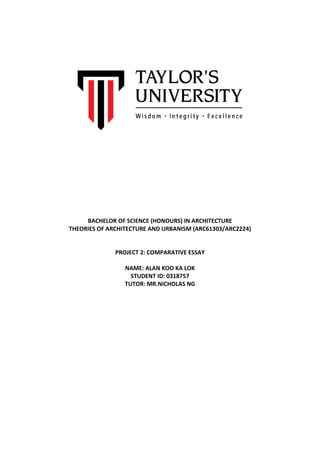This document provides an analysis and comparison of contact points and social activities between Roppongi, Tokyo and Jalan Tuanku Abdul Rahman in Kuala Lumpur. It finds that in both areas, necessary activities like commuting provide opportunities for passive contact among people and help form social networks. In Roppongi, public transit stations underground maximize space and crowd people, while in Jalan TAR the main bus station is a landmark. However, optional activities that allow socializing are more common in Roppongi due to its cooler climate and wider sidewalks, while Jalan TAR has fewer such opportunities given its warmer weather.










